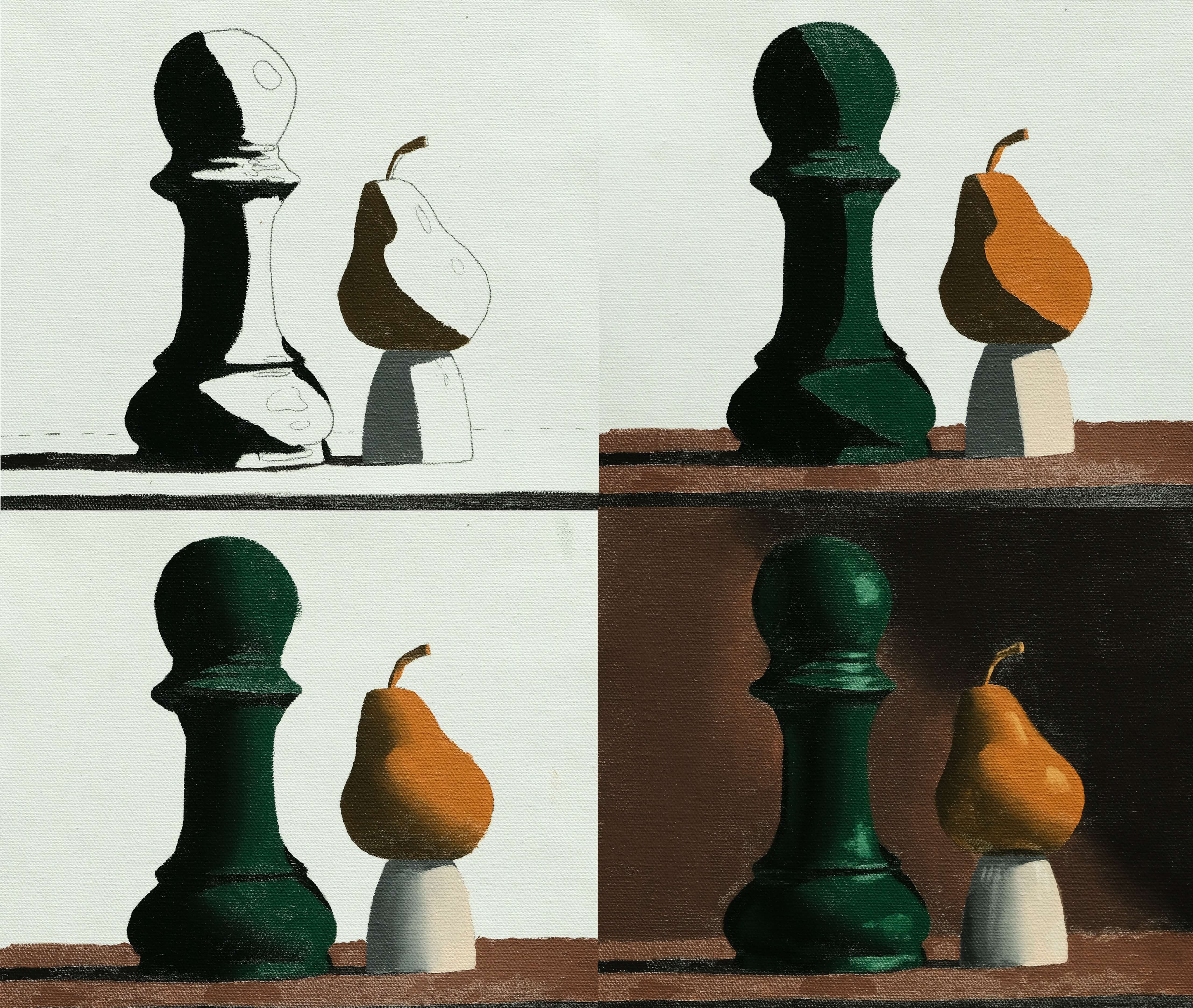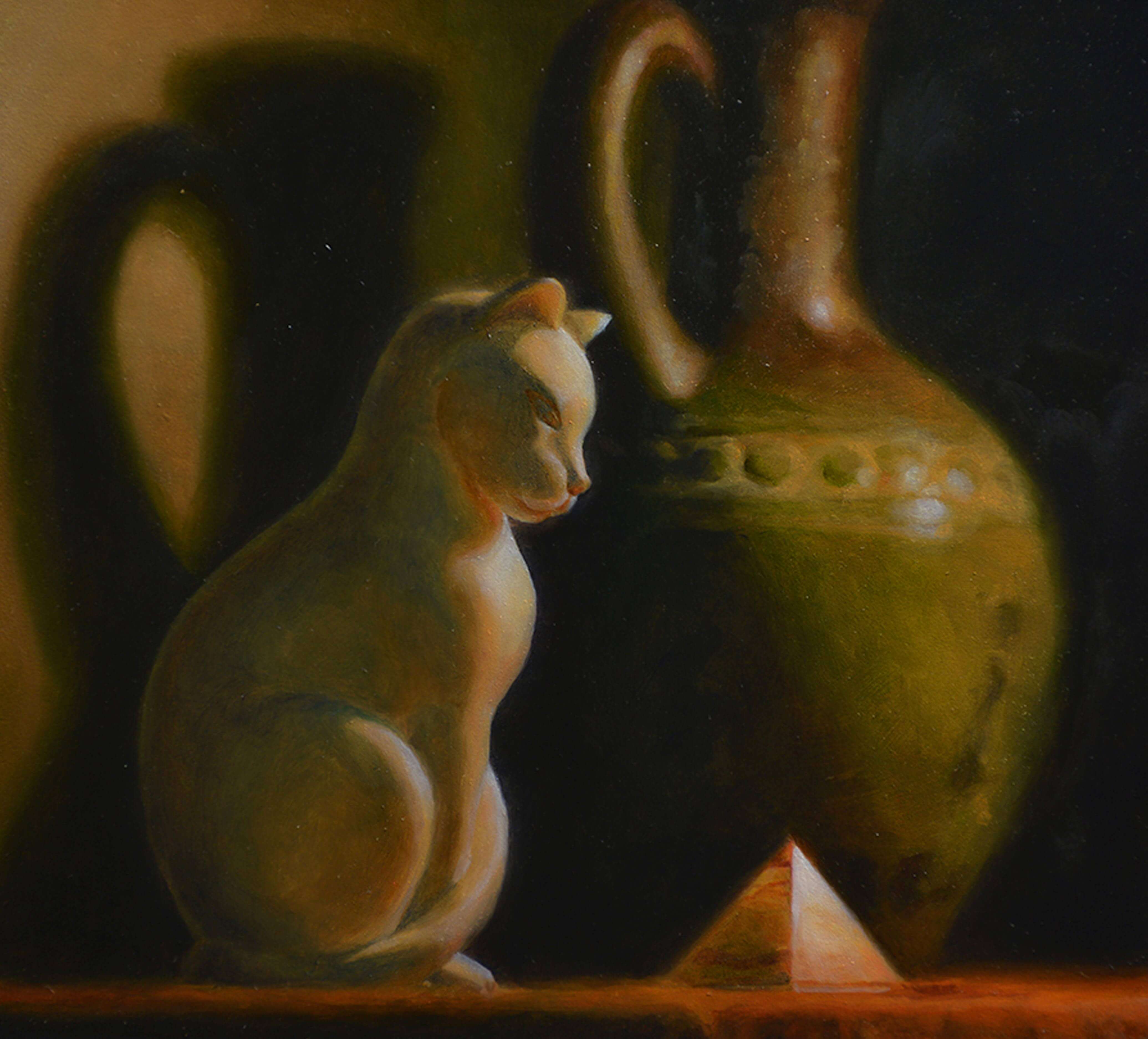
Evolve students follow a set of carefully made guidelines and rules for art throughout their education, adhering to boundaries even on their palette paper.
If you've asked yourself, 'does art have rules?', then this article is for you.
Education requires rules, and art education is no different.
Many people believe that art requires only creativity and no boundaries, but in reality, this approach to education does not work for most students.
Rules for Art are Essential
Rules for art and boundaries in education are essential. They teach students to work within certain realities. By breaking education into small manageable pieces with concrete boundaries and structure, true learning can come about.
Additionally, once you know the rules of what you are learning, then they can act as guides. They become the information you use to achieve the desired effect in whatever you are doing. In anything you learn, from art to math, rules are necessary.
Rules for art are not necessary for the painting. Rules for art are necessary for learning.

The Purpose of Rules for Art Education
When we learn, we treat rules for art kind of like bumpers on a bowling alley. You put up these bumpers and they keep you in the lane, guiding your ball towards the pins. You still have to get the bowling ball into the lane, but the bumpers keep you on a safe course.
Without the bumpers, you have less chance of success. Your bowling ball may go into the gutter and never reach the pins at all. Or, even worse, it may fly out of your lane entirely.
And that’s what rules do in art education. They create boundaries to keep you safe and on the right course.
With so many techniques and materials, unleashing a student on the entirety of art would be completely baffling. But by starting with manageable rules to follow and clear, concise education, these boundaries guide students to learn the fundamentals methodically.
At some point, you outgrow those rules for art. You understand why they exist, and now you can work and make sense of the things around you.

An example of the Evolve Block 3 painting process. Students first lay in color shadows, followed by color lights. Then the students handle edges, followed by reflections, highlights, and finishing touches. These guidelines keep students on track.
Rules for Art Teach Students How to See
When students first learn, they do not know how to see or what they are looking at. Rules for art help students to make sense of what they see because rules constrain what they are allowed to do.
I had a student come to my school who was left frustrated by her lack of education in a college program. She was told to draw a figure from life but struggled to make anything that resembled the figure she saw. She asked question after question but was told again and again to simply draw what she saw. The problem was, she did not know what she was looking at or looking for.
So again, does art have rules? Yes. Students, whether they know it or not, need rules and boundaries in order to learn. For example, if you have a set of rules in place for how you have to apply the paint, this will force you to think about what you are looking at. You must break things down into manageable portions.
Then, students can be taught to truly see and understand what they are looking at.

Learning with boundaries creates artists who, with strong foundations, are able to continue to grow and create powerful work. Painting by Iris Liu
Does Art Have Rules: Final Thoughts
Learning with rules for art and boundaries creates a strong foundation in artists. When these rules are taken away as a student progresses, the foundation remains.
Students can understand that rules function to support what they learn. Once the student understands and knows what they are doing, the rules can fall away because their foundations are shored up.
Does art have rules? Let us know your thoughts in the comments below!
FREE MASTERCLASS:
The 4 Part Framework to Develop Artistic Excellence in 12 Months
